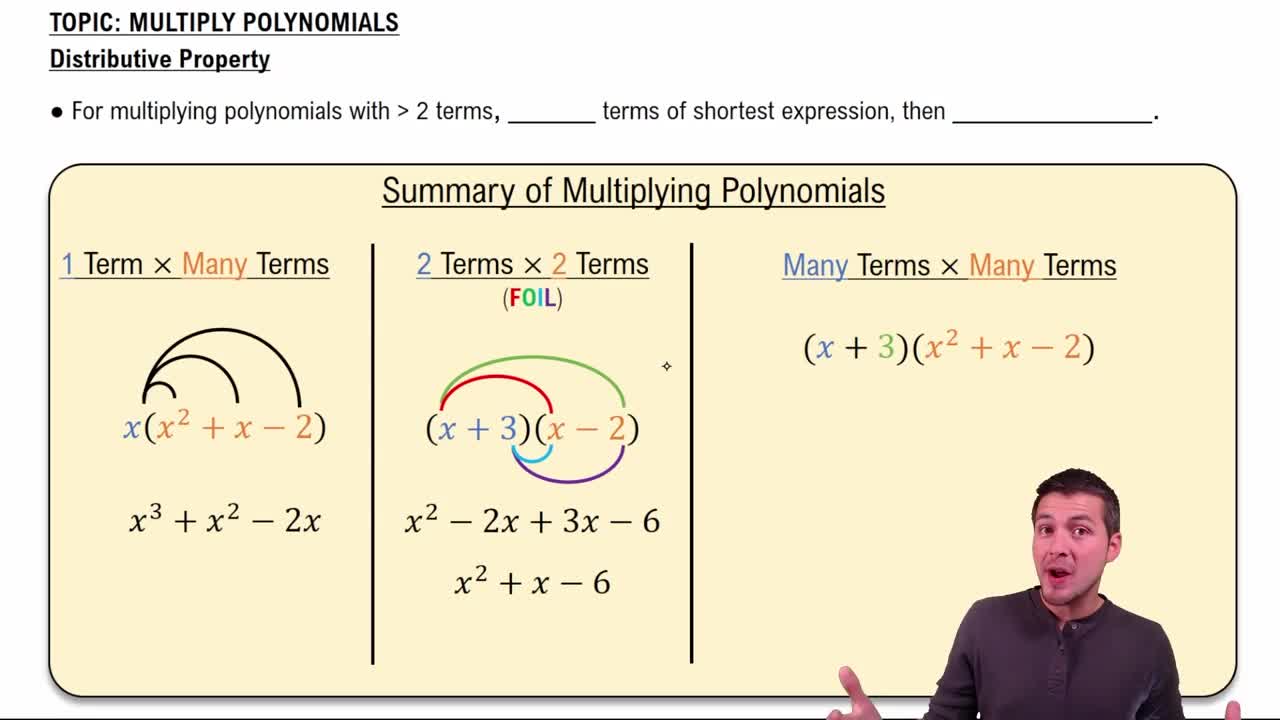Linear Equations
Linear equations are mathematical statements that express the equality of two linear expressions. They typically take the form ax + b = cx + d, where a, b, c, and d are constants. Solving these equations involves isolating the variable, often by performing operations such as addition, subtraction, multiplication, or division on both sides of the equation.
Recommended video:
Categorizing Linear Equations
Distributive Property
The distributive property is a fundamental algebraic principle that states a(b + c) = ab + ac. This property allows us to multiply a single term by two or more terms inside parentheses. In the context of the given equation, applying the distributive property is essential for expanding both sides before isolating the variable x.
Recommended video:
Multiply Polynomials Using the Distributive Property
Isolating the Variable
Isolating the variable is a key step in solving equations, where the goal is to get the variable (in this case, x) alone on one side of the equation. This often involves rearranging the equation and performing inverse operations to eliminate other terms. Mastering this technique is crucial for finding the value of x in linear equations.
Recommended video:
Equations with Two Variables
 Verified step by step guidance
Verified step by step guidance Verified video answer for a similar problem:
Verified video answer for a similar problem:



 4:46m
4:46m